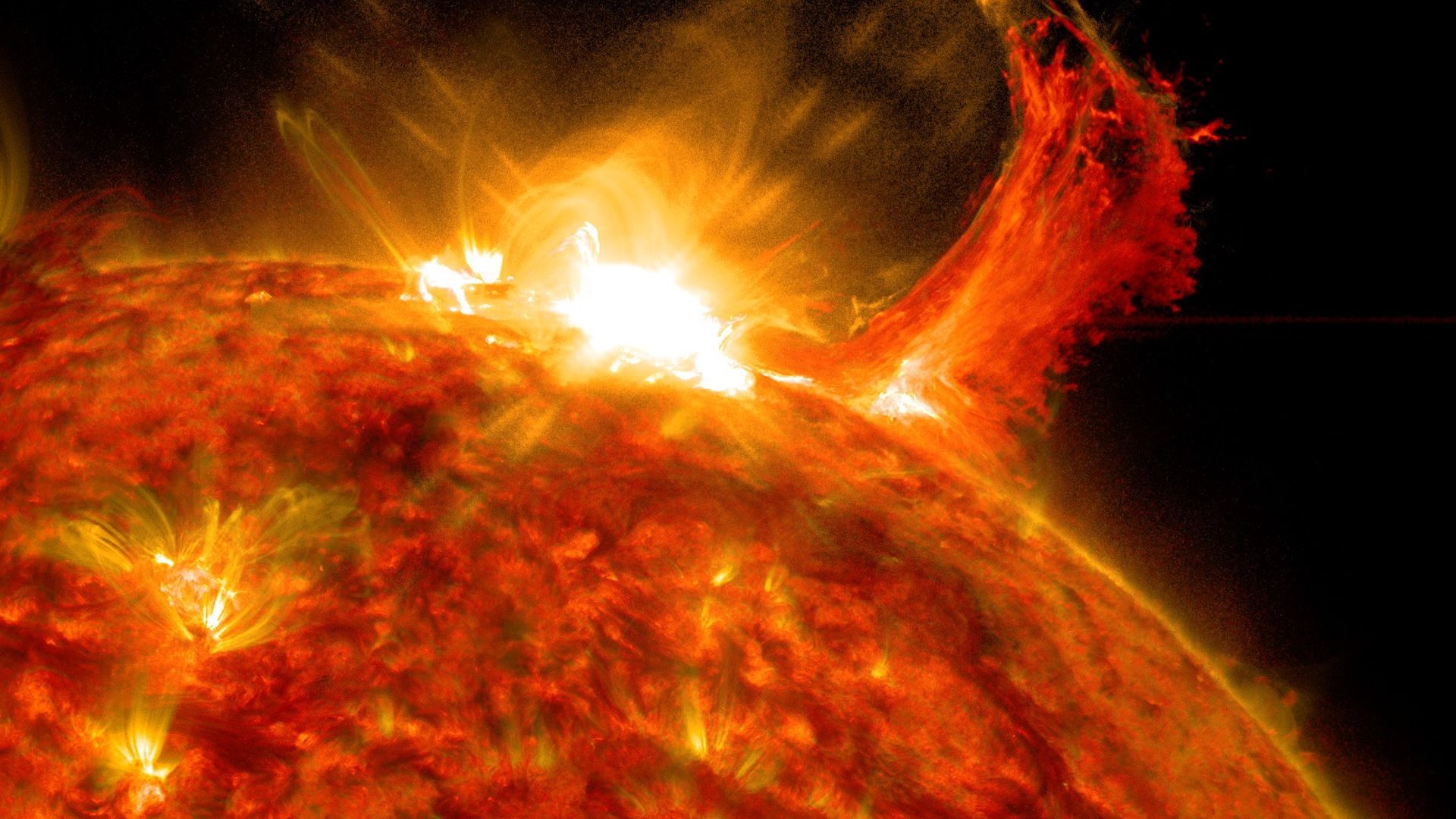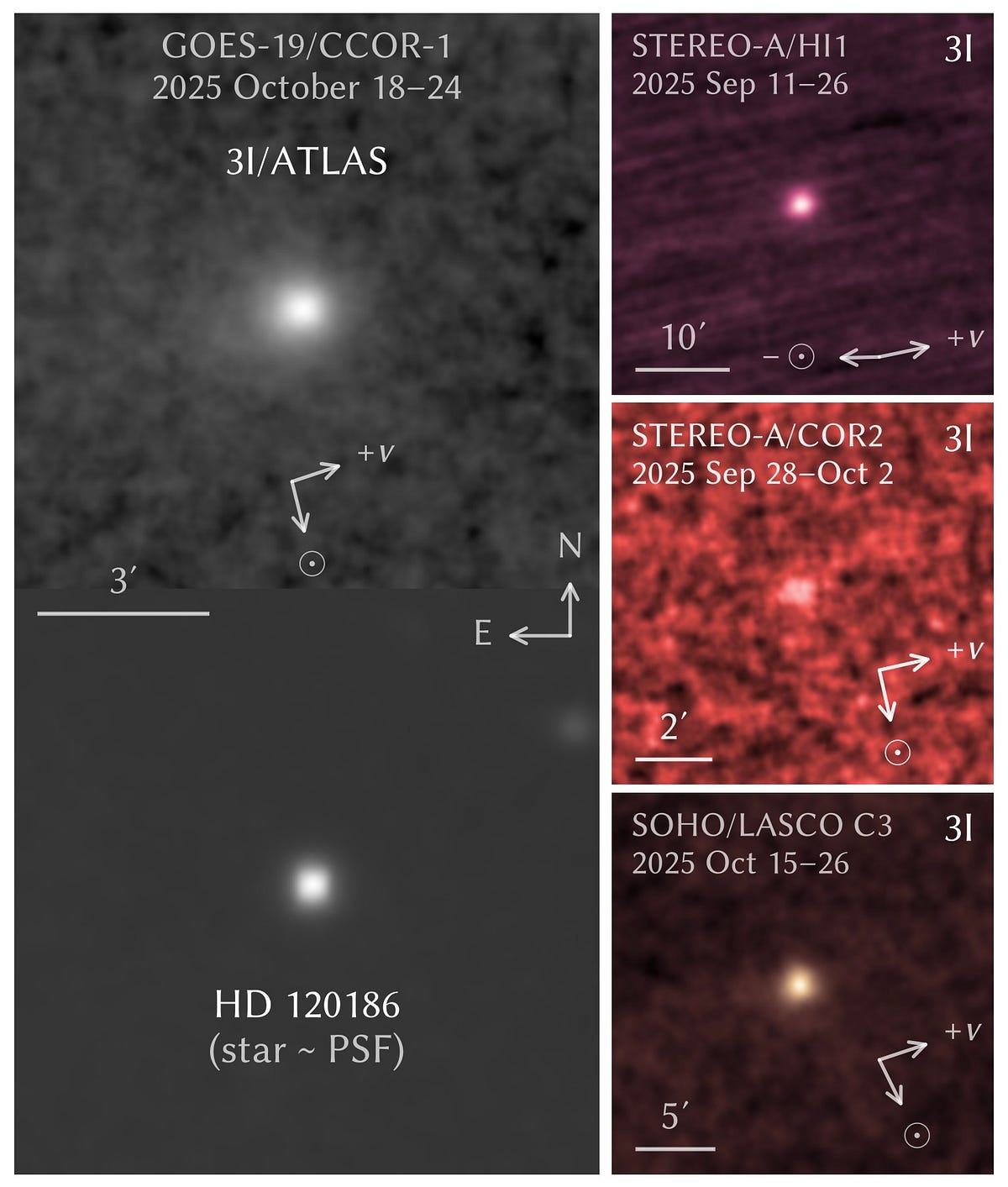
Hubble captured this image of the interstellar comet 3I/ATLAS on July 21, 2025, when the comet was 277 million miles from Earth. Hubble shows that the comet has a teardrop-shaped cocoon of dust coming off its solid, icy nucleus.
A rare interstellar comet reaches its closest point to the sun on Wednesday and Thursday — and it’s exciting astronomers around the world.
Comet 3I/ATLAS is just the third confirmed interstellar object to pass through our solar system, meaning it’s travelled billions of miles through other systems in space. Its orbit is strongly hyperbolic, meaning it’s moving with enough speed to avoid our sun’s gravitational pull.
Article continues below this ad
Here’s what to know about the astronomical wonder.
What do we know about Comet 3I/ATLAS?
The “3I” designation stands for “third interstellar,” because it is just the third confirmed interstellar object to pass through our solar system — after 2I/Borisov in 2019 and 1I/’Oumuamua in 2017. It was first discovered in July 2025 via a regular sky survey by the Asteroid Terrestrial-impact Last Alert System (ATLAS), after which the comet is named.
Such objects can give scientists the opportunity to sample material from other star systems and compare it with our own.
Article continues below this ad
“[Interstellar objects are] like cosmic time capsules, delivering samples from distant exoplanetary systems we could never otherwise visit and study directly,” Space.com states. “The discovery of 3I/ATLAS opens the door to a completely new branch of study in astrophysics.”
However, this opportunity is fleeting — upon its discovery 3I/ATLAS was hurtling through our solar system at around 130,000 miles per hour, which according to NASA is “the highest velocity ever recorded for a solar system visitor.” It’s believed to have increasingly moved faster in the months since, as it passes closer to our sun. It will soon leave our system and continue its journey through interstellar space.
A few weeks after the comet was identified, NASA’s Hubble Space Telescope gathered enough information to give astronomers a better understanding of its size and makeup. 3I/ATLAS has a “solid, icy nucleus” that is believed to be between 1,000 feet and 3.5 miles in diameter. The University of California’s David Jewitt, science team leader for the Hubble observations, explained the difficulty in drawing deeper conclusions about the object.
Article continues below this ad
“No one knows where the comet came from,” Jewitt said. “It’s like glimpsing a rifle bullet for a thousandth of a second. You can’t project that back with any accuracy to figure out where it started on its path.”
The comet’s chemical makeup suggests it formed in a cold, distant region of its parent system’s disk, under temperature, radiation or disk-environment conditions much different than those of our solar system. Experts theorize 3I/ATLAS is likely very old, between three and 14 billion years per the Planetary Society. For comparison, our solar system is around 4.6 billion years old.
NASA estimates the closest it will get is 130 million miles from the sun on Oct. 30. Earth is roughly 93 million miles from the sun.
Can I see Comet 3I/ATLAS? When does 3I/ATLAS pass Earth?
Unfortunately, Comet 3I/ATLAS is not visible to the naked eye. The object can’t currently be captured by a telescope either, as it’s on the opposite side of the sun from Earth.
Article continues below this ad
However, this is expected to change in mid-to-late November, when it moves away from the sun’s glare. By early December, the interstellar object should become visible to telescopes. It will travel closest to the Earth around Dec. 19, when it will be roughly 167 million miles away. Due to 3I/ATLAS’ trajectory, experts have determined it poses no threat to Earth.

Interstellar comet 3I/ATLAS is making its way through our Solar System — only the third known visitor from another star system.
Is 3I/ATLAS an alien ship? Harvard professor’s theory met with criticism
The rumor that 3I/ATLAS may not be a comet at all sprouted from Avi Loeb, an astrophysicist at Harvard University and the head of its Galileo Project. Loeb, along with two others, wrote a paper published in July that speculated the object could be “hostile” alien technology. The publication justified the claim, in part, by pointing out its unusual features like its hyperbolic trajectory, alignment with the ecliptic plane (the plane of Earth’s orbit), and “non-natural” chemical and physical makeup.
Article continues below this ad
Many experts and agencies like NASA have shared doubt about Loeb’s theory, as reported by The Guardian.
“It looks like a comet. It does comet things. It very, very strongly resembles, in just about every way, the comets that we know,” Tom Statler, a lead scientist for NASA, said. “It has some interesting properties that are a little bit different from our solar system comets, but it behaves like a comet. And so the evidence is overwhelmingly pointing to this object being a natural body. It’s a comet.”
The theory of 3I/ATLAS being tied to extraterrestrial beings isn’t the first such claim by Loeb. In 2017 he made a similar claim about 1I/’Oumuamua, the first interstellar object detected in our solar system. That theory has since been debunked, include world-class astrophysics programs like the one at the University of Hawaii.
Article continues below this ad
Source link



